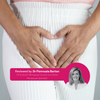Why nutrition matters during pregnancy, at birth and beyond.
What are the ‘First 1000 Days’?
The first 1000 days refers to the period from conception to a child’s second birthday, characterised by their rapid growth and development. This phase represents a critical window that is especially sensitive to environmental influences, including nutrition (of both mother and baby). It marks a time of both vulnerability and opportunity, with the potential to shape not only the short-term health of your baby but also their long-term health outcomes too.
Why is nutrition key during the first 1000 Days?
Nutrients are essential for regulating biological processes throughout your baby’s life, and they play a key role in their physical growth, organ and brain development during pregnancy and early infancy. This complex and rapid development results in increased nutrient requirements during this period. Without the right nutrition, both mother and baby face short- and long-term risks.
These include:
● Short-term: low birth weight, premature birth and maternal health issues.
● Long-term: stunted growth, developmental delays, poor immune function, and a greater risk of chronic disease later in life.
Meeting nutritional needs during pregnancy
Energy needs during pregnancy vary from one person to another, according to pre-pregnancy weight, muscle mass and physical activity levels. In the early stages of pregnancy, any potential increase in metabolic energy needs are generally countered by reduced levels of physical activity, which is why the NHS recommends an extra 200 calories per day, only in the third trimester. However, some women may need more than this, if they have a lower BMI, or higher physical demands.
Debunking the phrase “Eating for Two”
Despite the slightly increased need for energy in the third trimester, this common phrase can be quite misleading. Instead of focusing on food volume by "eating for two", the best way to meet the increased nutritional needs of both mum and baby is to enjoy a balanced, diverse and nutrient-dense diet, including plenty of the ‘Super Six’ plant groups e.g vegetables, fruits, wholegrains, legumes (beans and pulses), nuts and seeds, and herbs and spices.
Five key micronutrients required during pregnancy
Let’s break down a few of the key players in your baby’s development (although all micronutrients have a role to play – hence the importance of a varied diet):
Folate (Vitamin B9)
● Critical for forming the neural tube, which becomes your baby’s brain and spinal cord in early pregnancy
● Needed for red blood cell production and DNA repair
● UK Recommendation: The NHS recommends a supplement containing 400 micrograms/day (twice the recommended daily intake for non-pregnant women), from at least 3 months before conception until 12 weeks into pregnancy. Some women may need a high-dose prescription for 5mg/day, such as those with a family history of neural tube defects (NTD) or previous pregnancies affected by NTD, those with diabetes, BMI ≥ 30, certain medical conditions, or taking certain medications.
● Good food sources: green leafy vegetables (spinach, kale, broccoli, brussel sprouts etc.), wholegrains, nuts, peas, beans and lentils, oranges, poultry, pork, yeast and beef extracts (e.g. Marmite and Bovril), and fortified breakfast cereals
Iron
● Essential for the production of haemoglobin in red blood cells, which supports oxygen transport
● Blood volume increases during pregnancy, increasing the need for iron, but this is compensated by periods stopping, so there is no overall increase in iron requirements (unless pre-pregnancy levels are low)
● Involved in many biological processes for placenta and foetus development
● UK recommendation: 14.8 mg/day (same as for non-pregnant women); supplements are only recommended if iron-deficiency anaemia is diagnosed – consult your healthcare professional or midwife if you are concerned
● Common symptoms of deficiency: fatigue, pale skin, shortness of breath, heart palpitations, headaches
● Good food sources: red meat, poultry, beans, dark green leafy vegetables, nuts and wholegrains, fortified breakfast cereals. Drinking or taking Vitamin C alongside these plant food sources can help improve iron absorption. Good sources of Vitamin C include citrus fruits and their juices, peppers, strawberries, broccoli, blackcurrants, potatoes and sweet potatoes.
Iodine
● Critical for the production of thyroid hormones, which help regulate foetus growth and brain development
● Baby’s development depends on maternal thyroid hormones, especially in the first two trimesters
● UK recommendation: 140 micrograms/day (same as non-pregnant women). European recommendations increase this to daily intake to 200mcg/day for pregnant women.
● Good food sources: cow’s milk and dairy products, eggs, fish and shellfish. Plant-based sources include wholegrains, green beans, courgettes, kale, spring greens, watercress, and strawberries, but these sources vary depending on the quality of the soil in which they are grown. Fortified dairy alternatives may contain iodine, but it’s important to check the labels as not all dairy alternatives are fortified with iodine. A high quality pregnancy supplement should also contain iodine.
Choline:
- Crucial for foetal neural tube formation and brain development
- Cannot be produced by our body in sufficient quantities, so we need to top up our choline intake through our diet.
- Currently no official recommended intake for choline in the UK, but evidence suggests choline intake in pregnant women is low compared to European and American recommended daily intakes, and women on plant-based diets are particularly at risk.
-
Good food sources: Eggs, meat and poultry, fish, dairy products, legumes and nuts, cruciferous vegetables such as broccoli and brussel sprouts, and wholegrains.
Omega-3 Fatty Acids
● Essential for brain and eye development
● Found mainly in oily fish (such as salmon, sea bass, sea bream, mackerel, sardines), nuts, seeds and seed oils (e.g. flaxseeds, chia seeds, walnuts, rapeseed oil)
● Try to eat one to two portions of oily fish per week, not exceeding two portions a week during pregnancy. You can also eat white fish, but limit tuna steaks to 140g (cooked), or 4 x 140g tinned tuna cans (drained) per week, because of its mercury content. You should also avoid swordfish, marlin, shark, raw shellfish, and cold-smoked or cured fish during pregnancy.
Eating a balanced diet during pregnancy
The British Nutrition Foundation recommends consuming a balanced and varied diet during pregnancy, including:
● Meals based on whole grains or starchy vegetables
● Plenty of fruits and vegetables of all different colours - ‘eat the rainbow’
● Moderate amounts of lean proteins (meat, fish, eggs, beans, pulses, tofu etc.)
● Moderate amounts of dairy products or fortified dairy alternatives
● Limit food and drinks high in fat and sugar
Balanced means getting all the necessary nutrients in the right proportions. Varied means including different food types to cover a broad spectrum of vitamins and minerals.
Foetal Brain Growth Starts Early
By the end of the embryonic stage - that’s the first 8 weeks of pregnancy - the basic building blocks of the baby’s brain and nervous system are already in place. At this point, the main parts of both the central nervous system (the brain and spinal cord) and the peripheral nervous system (the network of nerves throughout the body) have started to take shape. From here, the foetal stage begins and continues all the way until birth, as the brain and body keep growing and developing.
The Gut-Brain Connection
Emerging science suggests that the gut-brain axis - a two-way communication system between the brain and the gut, may play a role in early brain development. The gut microbiota begins to establish itself in early life, associated with critical periods of neurodevelopment.
Method of birth and the gut microbiome
Early life is a critical window for establishing baby’s gut microbiota. A healthy and diverse gut microbiome during infancy supports the development of the immune system, helping to protect against infections and reduce the risk of developing allergies and auto-immune diseases. Disruptions in this early microbiome development - referred to as ‘dysbiosis’ - have been linked to conditions such as colic, asthma, obesity, and inflammatory bowel disease. The digestive tracts of babies with colic, for example, have significantly lower counts of Lactobacilli and Bifidobacteria, increased concentrations of Proteobacteria bacteria, and a reduced overall diversity, than healthy babies.
The method of delivery can significantly influence the baby’s early microbiome composition, whereby:
● Vaginal delivery exposes the baby to beneficial bacteria from the birth canal and the mother’s vaginal microbiome, such as Lactobacillus, Prevotella, and Sneathia species
● C-section delivery in contrast, leads to colonisation by skin and environmental microbes such as Staphylococcus, Corynebacterium, and Propionibacterium, and generally results in lower overall microbial diversity after birth
Other factors shaping baby’s gut microbiome in early life
Besides the method of delivery, many other factors affect baby’s developing gut microbiome. These include:
● Breastfeeding vs. formula feeding
● The mother’s diet
● Complementary feeding (weaning) and dietary diversity
● Genetics
● Antibiotic use (during pregnancy and infancy)
● Other environmental exposures (including smoking, pets, siblings, geographical location etc)
Coming up next…
Keep an eye out for Part 2 of the ‘First 1000 Days’, where we take a closer look at how infant feeding (breast milk vs. formula), weaning and diverse food choices can impact baby’s developing gut microbiome and future health.
Sources:
● Schwarzenberg SJ et al. Pediatrics 2018;141(2):e20173716.
● Mousa A, Naqash A, Lim S. Nutrients 2019;11(2):443.
● Prado EL, Dewey KG. Nutr Rev 2014;72(4):267–84.
● O’Brien KO, Thomas CE. In: Handb Nutr Pregnancy 2018:31–49.
● Georgieff MK. Am J Obstet Gynecol 2020;223(4):516–24.
● Chu DM et al. Nat Med 2017;23(3):314–26.
● Power SE et al. Br J Nutr 2014;111(3):387–402.
● Vitamins, minerals and supplements in pregnancy - NHS
● Healthy eating in pregnancy - Start for Life - NHS
● Nutrition for Pregnancy - British Nutrition Foundation
● https://www.bda.uk.com/resource/iodine.html
● Jaiswal A et al. Cureus 2023:15(11):e48538
● Derbyshire E et al Nutrients 2021. 13(12):4390
● Stiles J and Jernigan T, Neuropsychol Rev 2010 Nov 3;20(4):327–348
● Arrieta MC et al. Front Immunol. 2014;5:427.
● Tamburini S et al. Nat Med. 2016;22(7):713-722.
● de Weerth C et al. Pediatrics (2013) 131 (2): e550–e558
● Collado MC. Et al, Gut Microbes 3:4, 352-365; July/august 2012
Written by Rachel Redman - Registered Dietitian
Reviewed by Nichola Ludlam-Raine: Specialist Registered Dietitian



